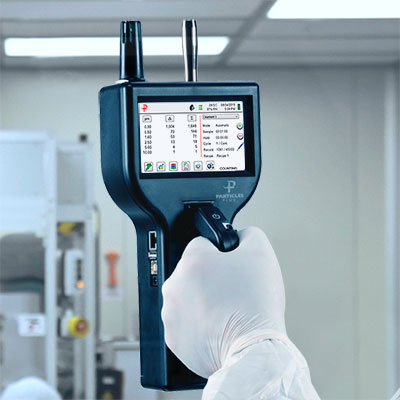Throughout all cleanroom facilities, maintaining strict cleanliness and maintaining the highest standards is a monumental challenge. Everything, both inside and outside of the cleanroom, is a potential source of contamination. To reduce the chance of major contamination all operatives should be adequately trained and a cleanroom testing regime adhered to at all times. Whether manufacturing pharmaceuticals or working with high tech semiconductors even the smallest stray particles in the air can cause disastrous results requiring expensive downtime and clean up procedures.

According to the NEBB (National Environmental Balancing Bureau), the number one cause of contamination within cleanrooms is due to its own staff. In some instances cleanroom operators and technicians are responsible for 70% to 80% of cleanroom contamination problems which is a massive cause for concern.
Historically there are four basic factors that contribute to contamination within cleanrooms:
1. Cleanroom Hygiene
It is essential that all cleanroom technicians maintain a high standard of personal hygiene. Poor personal hygiene can make a big difference when it comes to potential contamination within a highly controlled environment. If a person’s hands and/or face are not completely clean, there is a much higher number of potentially damaging particles seeping out from under protective clothing, including dandruff, hair and loose skin. It is extremely important that operators are aware of the importance of good hygiene and are given clear instructions on this prior to working in the clean room environment.
All technicians should thoroughly wash their hands and face should be left without any excess lotions or makeup. Operators should also be fully dressed in appropriate cleanroom apparel at all times to prevent contamination from the natural shedding of skin and other particles from the body. Also, when considering cleanroom clothing, it is especially important to make sure the proprietary gloves and shoe coverings properly cover wrist cuff and ankle openings of the cleanroom garments when arms and legs are extended to prevent particles from escaping.
2. Cleanroom Undergarments
While special cleanroom protective garments do a lot to reduce the possibility of contamination, they can be reduced even further if operators pay attention to the types of clothes they choose to wear to work. Fabric materials such as suede, velour and wool may shed fibres and form “fabric balls” that may introduce extra risks into the environment. If you wear good quality cotton etc. it should help to reduce excess fibres particles that may escape from cleanroom garments and lead to cleanroom contamination.
3. Cigarette Smoke
Residual smoke consists of particles that are left in the lungs and slowly emitted into the air after someone smokes a cigar or cigarette. If employees smoke during their break-time residual smoke can become a possible contaminant in even the most sterile of cleanrooms. If smokers rinse their mouths, it should assist in diminishing this potential risk. The best solution, however, is to use facemasks which will prevent residual smoke, as well as other particles in exhaled breath, from entering the controlled clean room environment.
4. Operator Training
Employees who don’t understand why they need to follow certain procedures due to adequate training are more likely to overlook necessary protocols and eventually cause something to go wrong. Everyone should be adequately trained and encouraged to follow all procedures, as well as make suggestions to improve them where necessary. Everyone has to work together to keep standards high and it’s always an ongoing process.
We hope this article has been helpful and informative. If you have a clean room that requires cleanroom testing, then please get in touch with us as soon as possible. We should be able to offer you an expedient solution for all your cleanroom testing and certification. We can also offer maintenance programmes to ensure your cleanroom is in compliance with the corresponding ISO standards– it’s why we place such emphasis on the process of ‘expert intervention’.
If you would like to know about our Cleanroom Testing services then please visit our clean room testing section on our website. Alternately you can contact us at on this on our contact page or phone Darren directly on: 07775623464.
